In an era characterized by an explosion of information, shifting market dynamics, and ever-evolving consumer behaviors, survival and growth in the business world requires not just adaptability, but a keen sense of strategic planning. Among the many tools available for business owners, executives, and managers, the SWOT analysis stands out as an instrumental strategic planning tool that has been aiding organizations to navigate through the uncertain waters of the business landscape.
Introduction to SWOT Analysis
SWOT analysis is a strategic planning tool that helps businesses identify their Strengths, Weaknesses, Opportunities, and Threats. This analytical framework facilitates an organization in understanding its current position in the market and offers a foundation upon which future strategies can be formulated and implemented.
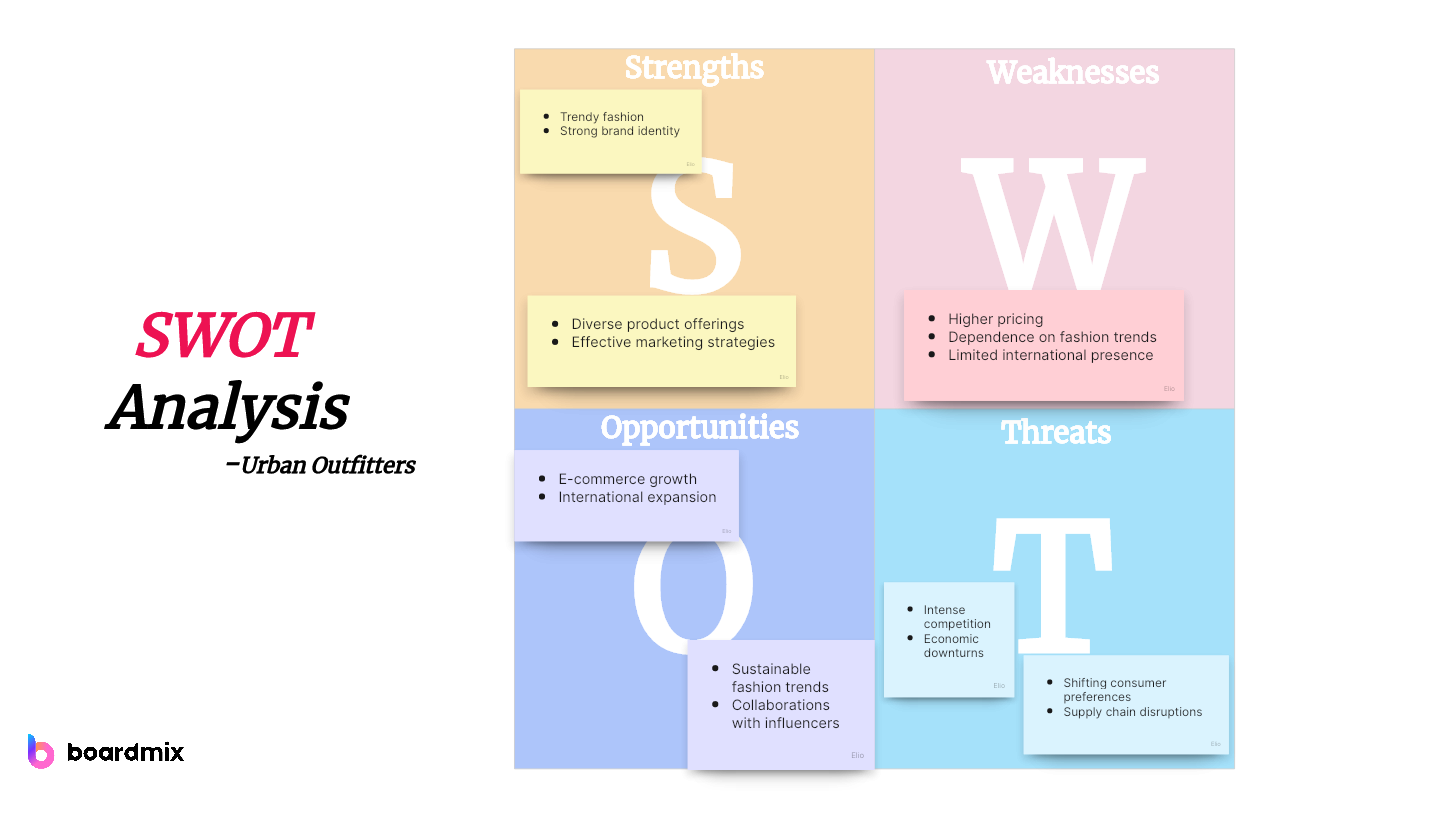
Strengths are the unique advantages or competencies that give an organization an edge over its competitors. This can range from a strong brand name, proprietary technology, superior customer service, or robust supply chain processes.
Weaknesses, on the other hand, are the areas where an organization lacks or falls behind its competitors. These can include factors such as lack of patent protection, weak brand recognition, limited financial resources, or poor customer service.
Opportunities are external factors in the business environment that an organization can exploit to its advantage. Opportunities can stem from market trends, technological advancements, changes in government policies, or shifts in consumer behavior and needs.
Finally, Threats are external factors that could harm an organization. These could include evolving market trends that render a product obsolete, emergence of new competitors, regulatory changes that negatively impact the business, or shifts in consumer behavior that reduce demand for a company's product or service.
Importance of SWOT Analysis in Business Planning
In business planning, SWOT analysis serves multiple crucial functions. Firstly, it aids in setting realistic objectives and formulating effective strategies to achieve these objectives. The analysis of strengths and weaknesses helps organizations identify areas of competitive advantage as well as areas that need improvement or restructuring.
Secondly, the analysis of opportunities and threats offers valuable insights into the external business environment. By understanding these elements, organizations can craft strategies that take advantage of emerging opportunities and mitigate potential threats.
Furthermore, SWOT analysis promotes proactive thinking rather than reactive management. It enables organizations to anticipate future challenges and opportunities, thereby reducing uncertainty and risk in decision making.
Additionally, SWOT analysis can facilitate better communication and understanding within the organization. By sharing the results of the SWOT analysis with different levels of staff, everyone gets a clearer understanding of where the business stands and what needs to be done to move forward.
To sum up, a SWOT analysis is not merely a business term or a passing fad. It's a strategic planning tool that when properly used can provide deep insights into the operational effectiveness and competitive landscape of a business. With this tool in hand, businesses can navigate through the uncertainties of the market, maximize their potential and ensure long-term survival and growth.
Common Pitfalls to Avoid During SWOT Analysis of a Business
Conducting a SWOT analysis, a process that involves identifying the strengths, weaknesses, opportunities, and threats of a business, is considered to be an essential aspect of strategic planning. While this tool can provide valuable insights into the internal and external environment of a business, a misapplication or incorrect execution can lead to distorted results and misguided strategic decisions.
Overgeneralizing Information
One of the common mistakes businesses make when conducting a SWOT analysis is overgeneralizing information. When compiling the list of strengths, weaknesses, opportunities, and threats, it is important to be as specific as possible. General statements may be easy to come up with and digest, but they don't give meaningful insights that can inform a strategic plan.
Neglecting External Factors
Many businesses often overlook the importance of examining external factors in their SWOT analysis. This includes both opportunities and threats in the external business environment. A focus only on internal factors, strengths, and weaknesses could result in missed opportunities and unidentified threats.
Ignoring Competition
Another mistake is to ignore or downplay competition. Strengths and weaknesses should be assessed in relation to the competition. Even if a business perceives itself as having certain strengths, it may not be a strength if its competitors are performing better in that area.
Failing to Prioritize SWOT Elements
All elements identified in the SWOT analysis are not equal. Businesses sometimes fail to prioritize these elements based on their impact on the organization. Failure to prioritize can lead to an overwhelming list of issues that could dilute focus and impact strategy development negatively.
Viewing SWOT Analysis as a One-Time Event
A common misconception is to view the SWOT analysis as a one-time event. Businesses exist in a dynamic environment where factors internal and external can change rapidly. Consequently, regular updates of the SWOT analysis are required to ensure that it remains relevant and helpful.
Confusing Strengths/Opportunities with Weaknesses/Threats
In some instances, businesses may confuse strengths or opportunities with weaknesses or threats, leading to inaccuracies in the SWOT analysis. This typically happens when there is no clear understanding of what constitutes each SWOT element.
Avoiding these common pitfalls can make your SWOT analysis more accurate, reliable, and useful for strategic planning. Remember, the primary objective of a SWOT analysis is to gain insights into your business's internal strengths and weaknesses while identifying external opportunities and threats. It's a valuable tool for strategic planning when done correctly. Therefore, take time to understand and apply it properly to reap its full benefits.
How to Conduct a SWOT Analysis of a Company: A Step-by-Step Guide
SWOT analysis is a cornerstone of strategic planning, offering companies a clear overview of their Strengths, Weaknesses, Opportunities, and Threats. For modern companies, leveraging digital tools like Boardmix can help streamline and optimize the SWOT analysis process. Here is a step-by-step guide on how to conduct a SWOT analysis using Boardmix.
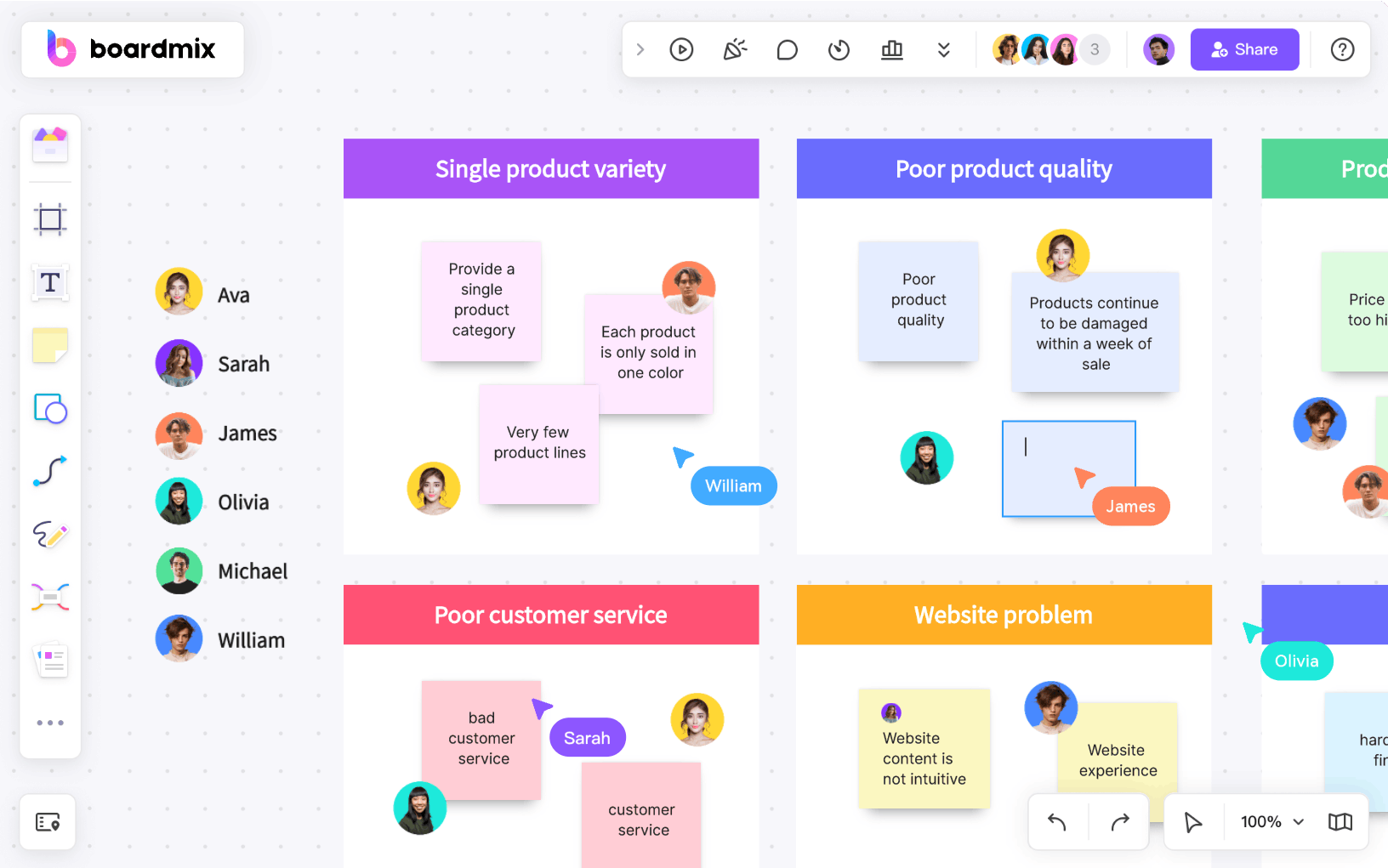
Boardmix is an innovative digital platform that facilitates efficient board management and strategic planning. Its collaborative features and interactive interface enable companies to carry out strategic exercises such as SWOT analysis effectively. Familiarizing yourself with the Boardmix platform and its functionalities is the first step towards conducting a SWOT analysis using the tool.
Setting Up Your SWOT Analysis
After logging in to Boardmix, you'll want to navigate to the dashboard. Here, you'll find an option to create a new board with template, choose “SWOT Analysis” one to get started.
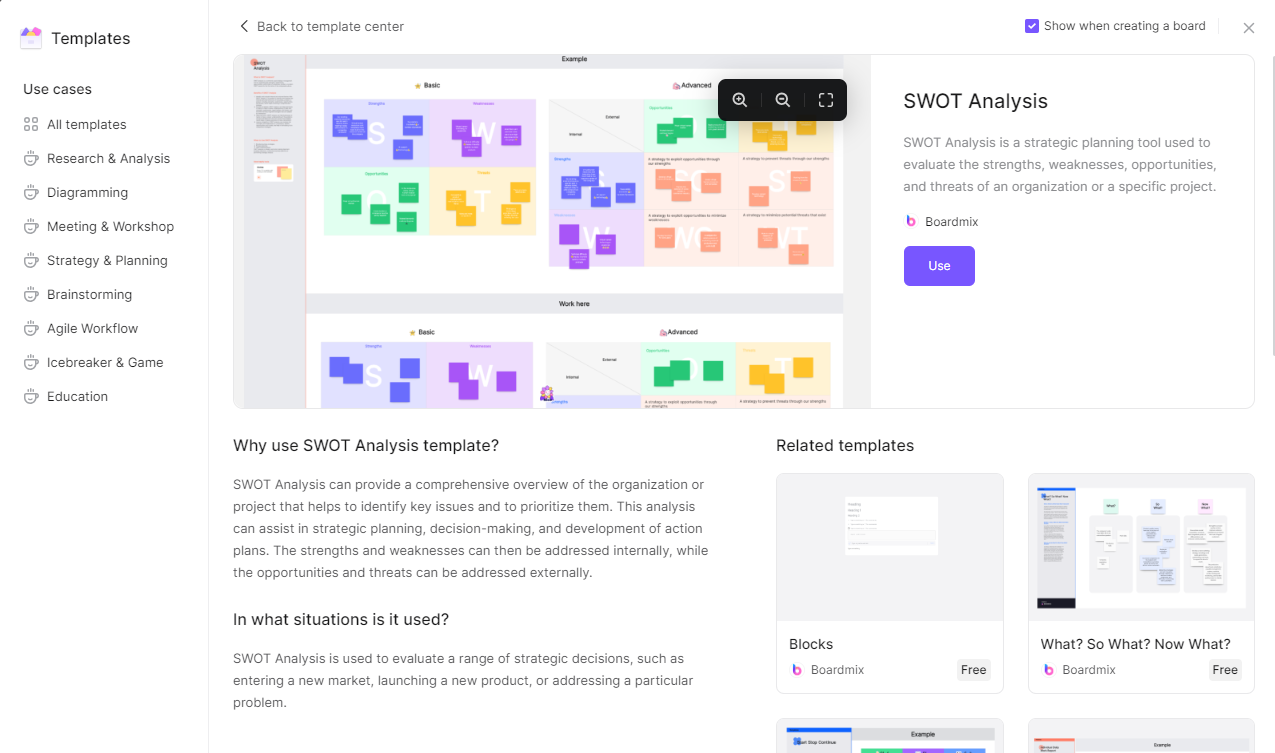
Identifying Strengths
The first aspect of the SWOT analysis is identifying strengths. Collaborate with your team members to list out all the internal positive attributes, resources, and capabilities of your company. These are factors that give your company a competitive edge. Add each strength into the designated field in the Boardmix platform.
Highlighting Weaknesses
Once you have a comprehensive list of strengths, it's time to move on to weaknesses. These are internal limitations or areas that need improvement within your company. As before, collaborate with your team to pinpoint these weaknesses and input them into the Boardmix platform.
Spotting Opportunities
Next, focus on identifying external opportunities that can contribute to your company's growth and success. These could be market trends, technological advancements, changes in consumer behavior or government policies, etc. As you identify each opportunity, add it to your SWOT analysis in Boardmix.
Recognizing Threats
The last component of the SWOT analysis is threats. These are external factors that can negatively impact your company's performance. Add these threats into Boardmix once they have been identified.
Analyzing and Strategizing
Once all four components of the SWOT analysis have been completed on Boardmix, it's time to analyze this information and develop strategies. Review each point, discuss it with your team, and start thinking about strategies that can utilize strengths and opportunities, mitigate weaknesses, and guard against threats.
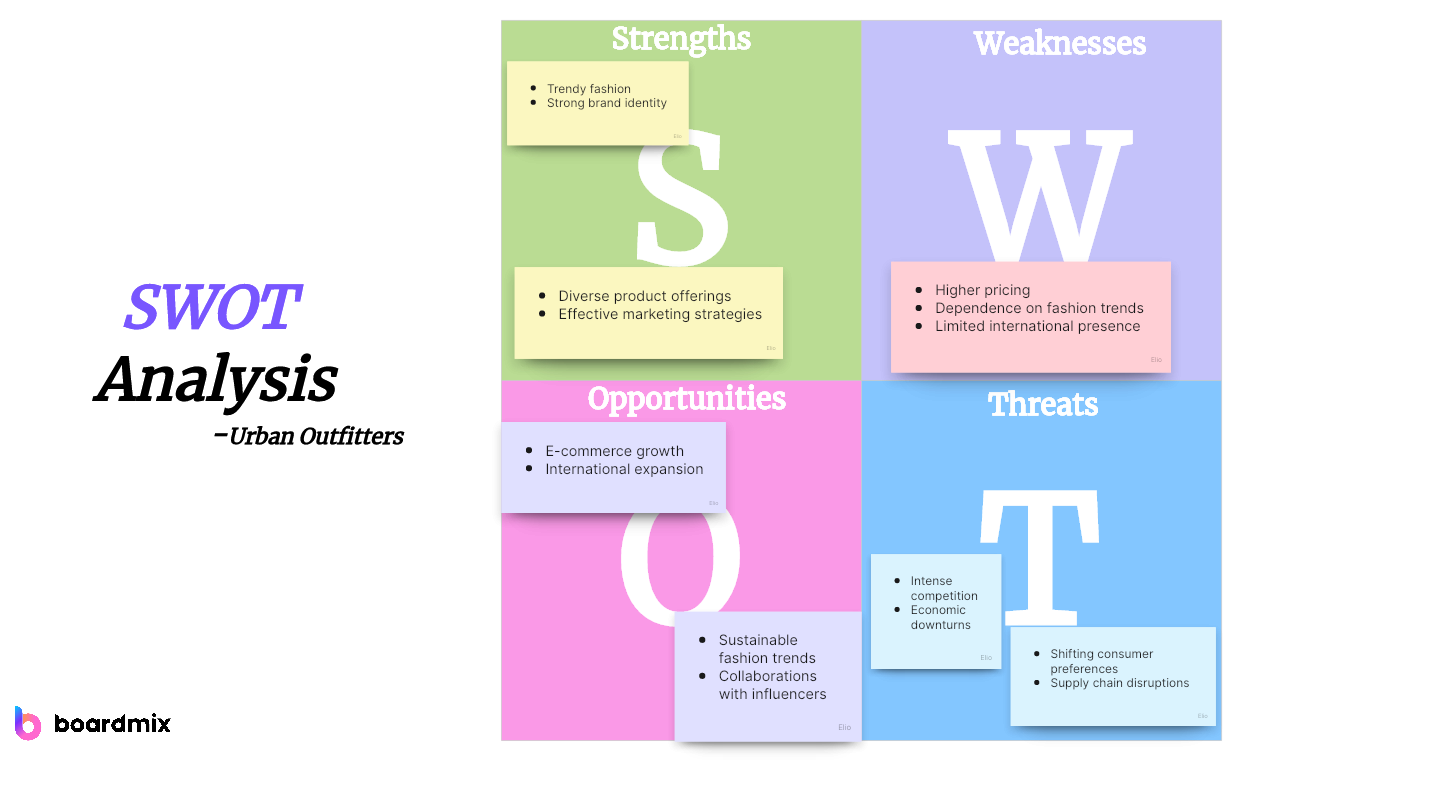
Monitoring and Updating
Remember, a SWOT analysis is not a one-time exercise but an ongoing process. Use Boardmix to routinely review and update your SWOT analysis to ensure it stays relevant in a rapidly changing business environment.
Boardmix offers an intuitive, collaborative platform for conducting a SWOT analysis and other strategic planning exercises. By leveraging technology, businesses can simplify their strategic planning processes, improve collaboration and make data-driven decisions that propel them towards their objectives.
Case Study: SWOT Analysis of Successful Companies
SWOT analysis is a versatile and straightforward tool employed by many successful companies worldwide. It aids in identifying Strengths, Weaknesses, Opportunities, and Threats, providing a clear picture of a company's strategic position. This section will present case studies of SWOT analysis from two successful companies, Apple Inc. and Amazon, providing insights into their strategic planning process.
SWOT Analysis of Apple Inc.
Apple Inc., a globally renowned technology company, has always used SWOT analysis to its advantage. Let's dissect the factors contributing to its success.
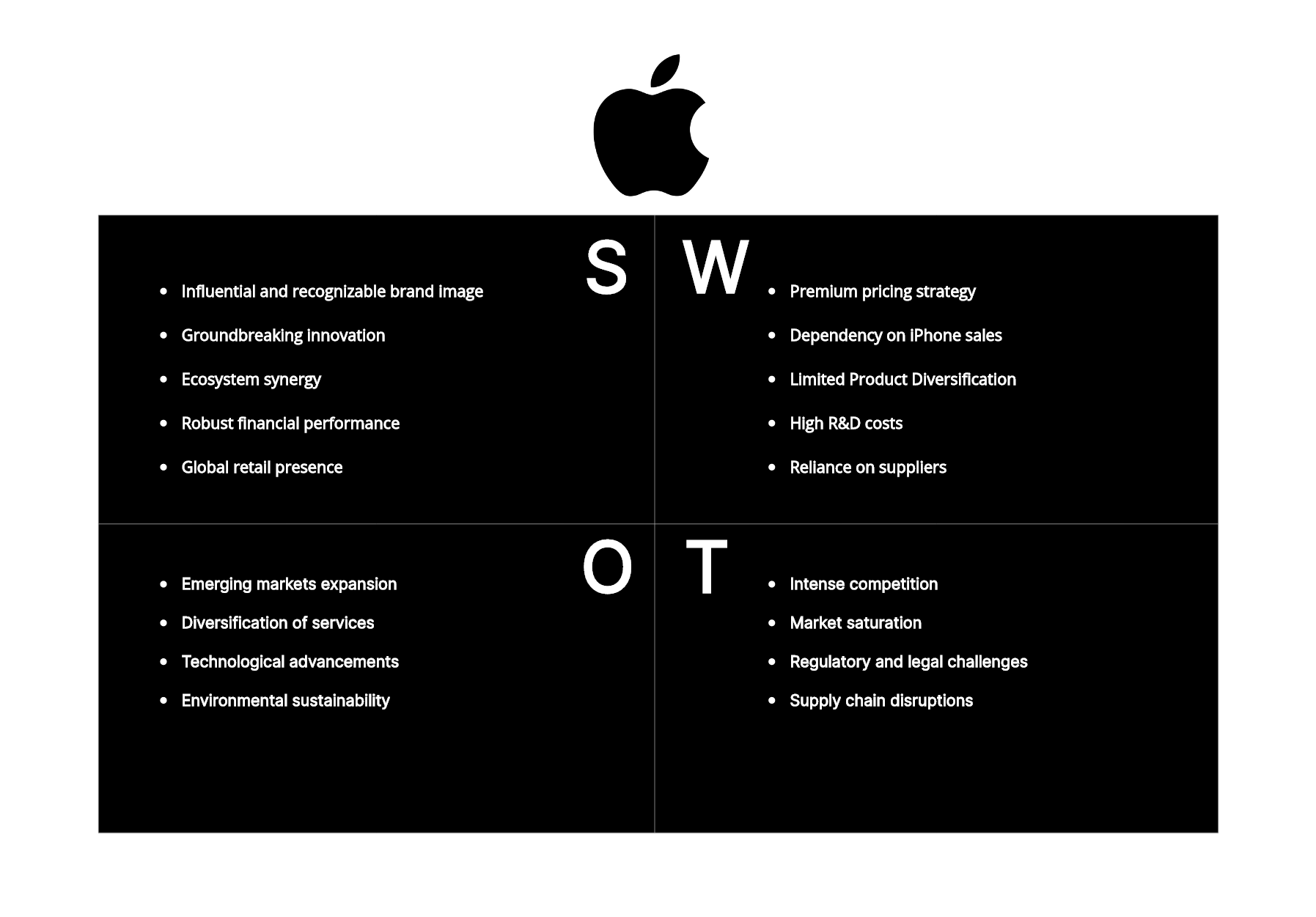
View more detailed Apple SWOT analysis
- Strengths: Apple’s main strength lies in its brand reputation, innovation, loyal customer base, and the ability to offer high-quality products with excellent design and user experience. The Apple ecosystem of hardware, software, and services is also robust, providing a seamless experience for customers.
- Weaknesses: Despite its strengths, Apple faces a few internal weaknesses. The company's high pricing strategy can restrict market share expansion, especially in developing markets. Its heavy reliance on iPhone sales for revenue is another weakness.
- Opportunities: The growing demand for wearable technology, the untapped potential of the smart home market, and the scope for expanding services like Apple Music and iCloud are all significant opportunities.
- Threats: Intense competition from other tech giants like Samsung and Google, rapid technological changes, and legal issues related to patents and intellectual property rights pose threats to Apple.
SWOT Analysis of Amazon
Amazon, an e-commerce giant, has effectively employed SWOT analysis to shape its strategy.
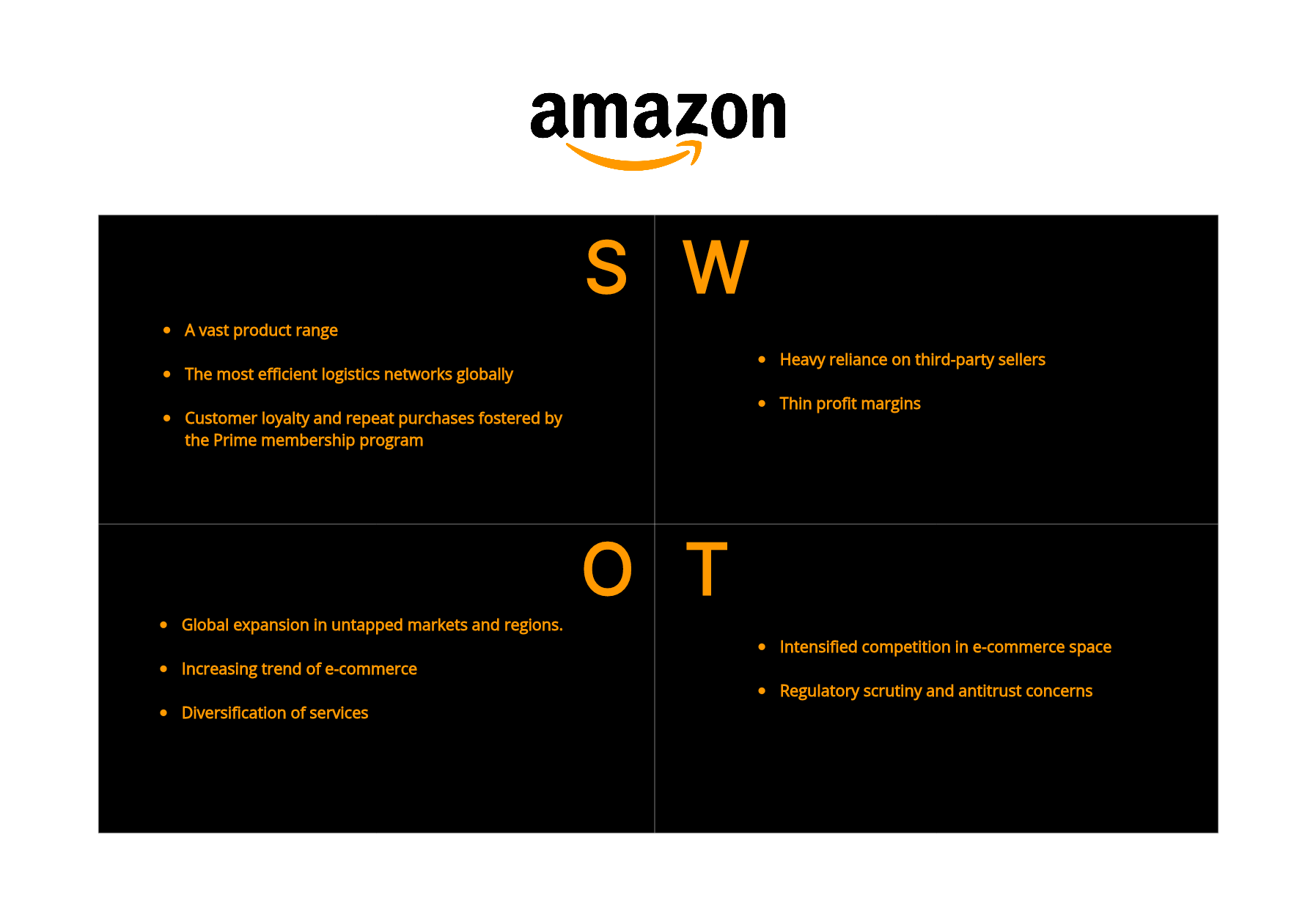
View more detailed Amazon SWOT analysis
- Strengths: Amazon's strengths include its vast product assortment, superior logistics and distribution capabilities, advanced technology infrastructure (like Amazon Web Services), and strong brand reputation for customer service.
- Weaknesses: Thin profit margins due to price competition and high operational costs are Amazon's primary weaknesses. Additionally, it faces regulatory scrutiny due to its enormous size and market influence.
- Opportunities: Expanding into new markets (geographically and product-wise), growing demand for cloud computing services, and leveraging technologies like AI and drones for logistics present significant opportunities for Amazon.
- Threats: Intense competition in both e-commerce and cloud computing sectors, changes in regulatory environments across different countries, and cybersecurity risks are notable threats facing Amazon.
Both Apple Inc. and Amazon have utilized SWOT analysis effectively to understand their internal strengths and weaknesses while keeping an eye on external opportunities and threats. By focusing on their strengths, mitigating weaknesses, capitalizing on opportunities, and preparing for threats, they have maintained their positions as leading companies in their respective industries.








